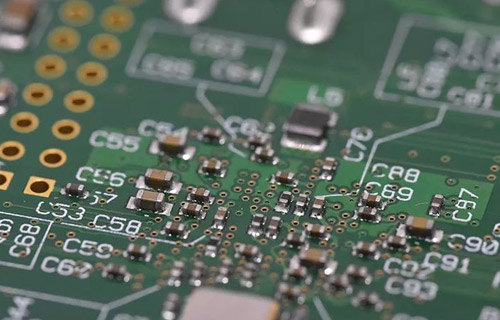Among the requirements for non-electrolytic nickel coating on PCB board, the non-electrolytic nickel coating should perform several functions:
Surface of gold precipitation
The ultimate purpose of the circuit is to form a connection with high physical strength and good electrical characteristics between the PCB board and the components. If there were any oxides or contamination on the surface of the PCB, this soldered connection would not have happened with today's weak fluxes.

Gold naturally precipitates on top of nickel and does not oxidize during long-term storage. However, gold does not precipitate on the oxidized nickel, so the nickel must remain pure between the nickel bath and the dissolution of the gold. Thus, a requirement for nickel is to remain free of oxidation long enough to allow precipitation of gold. Components developed chemical immersion baths to allow 6-10% of nickel in the precipitation
Phosphorus content. This phosphorus content in the electroless nickel coating is considered as a careful balance of bath control, oxide, and electrical and physical properties.
Hardness
Electroless nickel-coated surfaces are used in many applications requiring physical strength, such as bearings in automotive transmissions. PCB board requirements are far less stringent than these applications, but some stiffness is still important for wire-bonding, touch pad contact points, edge-connector and handling sustainability. Wire bonding requires a hardness of nickel. Such as
If the lead deforms the deposit, a loss of friction can occur, which helps the lead "melt" to the substrate. The SEM pictures showed no penetration into the planar nickel/gold or nickel/palladium (Pd)/gold surfaces.
Electrical Characteristics
Copper is the metal of choice for circuit formation due to its ease of fabrication. Copper conducts electricity better than almost every metal. Gold also has good electrical conductivity and is a perfect choice for the outer metal, as electrons tend to flow on the surface of a conductive path (the "skin" benefit).
Copper 1.7 µΩcm
Gold 2.4 µΩcm
Nickel 7.4 µΩcm
Electroless nickel plating 55~90 µΩcm
Although the electrical properties of most production boards are not affected by the nickel layer, nickel can affect the electrical properties of high frequency signals. Signal losses on microwave PCBs can exceed designer specifications. This phenomenon is proportional to the thickness of the nickel - the circuit needs to pass through the nickel to reach the solder point. In many applications, electrical signals can be restored to within design specifications by specifying less than 2.5µm of nickel precipitation.
Contact resistance
Contact resistance is not the same as solderability because the nickel/gold surface remains unsoldered throughout the life of the end product. Nickel/gold must maintain conductivity to external contacts after prolonged environmental exposure. Antler's 1970 work expresses the contact requirements for nickel/gold surfaces in quantities. Various end-use environments were studied: 3" 65°C, a normal electronic system operating at room temperature
Temperatures, such as computers; 125°C, the temperature at which universal connectors must operate, often specified for military applications; 200°C, a temperature that is becoming increasingly important for flight equipment. "
Nickel barrier layer Satisfactory contact at 65°C Satisfactory contact at 125°C Satisfactory contact at 200°C
0.0 µm 100% 40% 0%
0.5 µm 100% 90% 5%
2.0 µm 100% 100% 10%
4.0 µm 100% 100% 60%
For low temperature environments, a nickel barrier is not required. As the temperature increases, the amount of nickel required to prevent nickel/gold transfer on the PCB board increases.